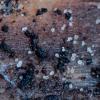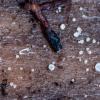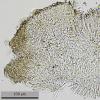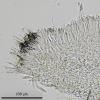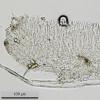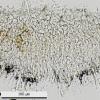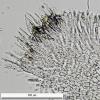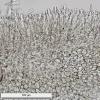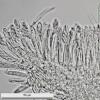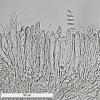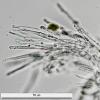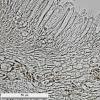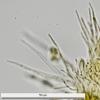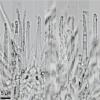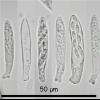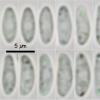
13-08-2014 19:09
 Miguel Ángel Ribes
Miguel Ángel Ribes
Hello on holidaysI have this Hyaloscypha on Abies

08-08-2014 23:00
 Rubén Martínez-Gil
Rubén Martínez-Gil
Hola a todos. Subo unas fotos de una Helvella que

12-08-2014 19:27
 Chris Yeates
Chris Yeates
Bonsoir tousthis is the first of two discomycetes

03-08-2014 13:48
 Rubén Martínez-Gil
Rubén Martínez-Gil
Hola a todos. Subo unas fotos de una Tarzetta que

03-08-2014 23:48
 Rubén Martínez-Gil
Rubén Martínez-Gil
Hola a todos. Subo unas fotos de una Helvella qu

11-08-2014 16:13
Chris JohnsonHelloThis was found on the leaves of Senecio jacob
Hyaloscypha albohyalina v albohyalina 040514 49
Miguel Ángel Ribes,
13-08-2014 19:09
 Hello on holidays
Hello on holidaysI have this Hyaloscypha on Abies alba. With Huhtinen key I goes to H. albohyalina var albohyalina, but I think spores are not Ok with this species.
Asci euamyloid and with croziers, (34.1) 36.9 - 46.2 (51.3) x (5.4) 5.8 - 6.6 (7.8) µm;
N = 26; Me = 42.3 x 6.3 µm.
Spores elipsoid-navicular, without guttules, no observed septum, (6.2) 6.4 - 8.1 (8.3) x (2.2) 2.3 - 2.7 (2.8) µm; Q = (2.3) 2.5 - 3.3 (3.6) ; N = 33; Me = 7.4 x 2.5 µm ; Qe = 2.9.
Hairs straight, pointed, not uncinated, slightly warted 1-2 µm at top, (31.0) 37.2 - 48.8 (52.4) x (1.0) 1.2 - 1.8 (2.0) µm; N = 43; Me = 42.6 x 1.5 µm (width at the top).
Thank you in advance
Miguel Á. Ribes
Hans-Otto Baral,
13-08-2014 21:17

Re : Hyaloscypha albohyalina v albohyalina 040514 49
The broad hairs point for me to Hyaloscypha aureliella.
Zotto
Zotto
Hans-Otto Baral,
13-08-2014 21:17

Re : Hyaloscypha albohyalina v albohyalina 040514 49
The broad hairs point for me to Hyaloscypha aureliella.
Zotto
Zotto


